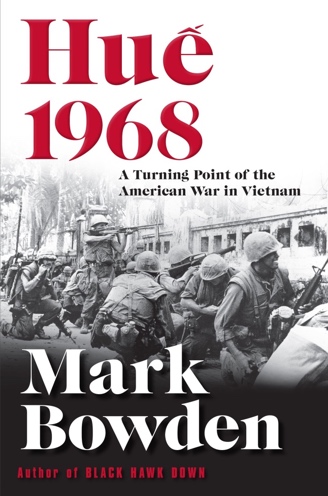Hue 1968 is the story of the centrepiece of the Tet Offensive and a turning point in the American war in Vietnam.
By January 1968, despite an influx of half a million American troops, the fighting in Vietnam seemed to be at a stalemate. Yet General William Westmoreland, commander of American forces, announced a new phase of the war in which “the end begins to come into view”. The North Vietnamese had different ideas. In mid-1967, the leadership in Hanoi had started planning an offensive intended to win the war in a single stroke. Part military action and part popular uprising, the Tet Offensive included attacks across South Vietnam, but the most dramatic and successful would be the capture of Hue, the country’s cultural capital. At 2:30 a.m. on 31 January 1968, 10,000 National Liberation Front troops descended from hidden camps and surged across the city of 140,000. By morning, all of Hue was in Front hands save for two small military outposts.

The senior commanders in Vietnam and politicians in Washington refused to believe the size and scope of the Front’s presence. Captain Chuck Meadows was ordered to lead his 160-marine Golf Company against thousands of enemy troops in the first attempt to re-enter Hue later that day. After several futile and deadly days, Lieutenant Colonel Ernie Cheatham would finally come up with a strategy to retake the city, block by block and building by building, in some of the most intense urban combat since World War II.
With unprecedented access to war archives in the United States and Vietnam and interviews with participants from both sides, Bowden narrates each stage of this crucial battle through multiple points of view. Played out over 24 days of terrible fighting, and ultimately costing 10,000 combatant and civilian lives, the Battle of Hue was by far the bloodiest of the entire war. When it ended, the American debate was never again about winning, only about how to leave. In Hue 1968, Bowden masterfully reconstructs this pivotal moment in the American war in Vietnam.
Mark Bowden is the author of thirteen books, including the bestsellers Black Hawk Down and Killing Pablo. He was a reporter at the Philadelphia Inquirer for 20 years and now writes for the Atlantic, Vanity Fair, and other magazines. He is also a writer-in-residence at the University of Delaware.
Hue 1968 includes a good number of images – largely of the people who feature in the narrative; and each chapter has a clear and detailed map illustrating the actions described. The book is arranged into six parts and includes a Vietnamese glossary, source notes and a detailed index.
Hue 1968 is a gripping and moving account of this pivotal moment from a master of narrative journalism. Through his scrupulous day-by-day reconstruction of the battle, Bowden encapsulates the essential lessons of the Vietnam War. Hue 1968 is also an exploration of what is common to all wars: humankind’s capacity for violence, cruelty, self-sacrifice, bravery, cowardice and love. Bowden undertakes this task with the talent and sensibility of a master journalist who is also a humanist and an honest man. Hue 1968 is gripping reading, full of emotion and colour, and is highly recommended.
Contact Marcus Fielding about this article.






